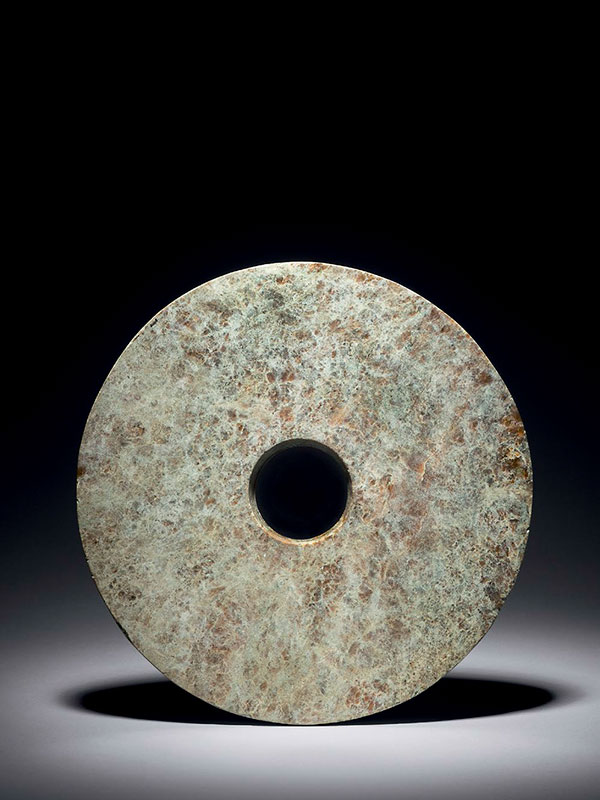Jade disc bi
A jade bi disc of uneven thickness. Its central, circular aperture is cut from both sides, leaving a ridge in the centre and visible grinding lines to either side of it. The stone is of predominantly light grey tone with areas of yellowish inclusions all over and a few dark grey speckles and white veining. Some calcified areas are visible. The disc is completely unadorned and its surface is well polished on both sides.
The Liangzhu culture was the last Neolithic jade culture in the Yangtze River delta. Objects made from costly materials such as jade, silk, ivory and lacquer have been found in the graves of the elite, whilst pottery was more commonly found in the burial plots of poorer individuals. The jade from this culture is characterised by finely worked large ritual pieces, such as this beautiful bi disc. Many Liangzhu jades have a white milky bone-like aspect, due to their tremolite rock origin and the influence of water-based fluids at the burial sites. A slightly smaller jade bi-disc of similar texture and tone is in the collection of the Freer Sackler Galleries, Smithsonian Institution.1 Another comparable example is in the collection of the National Museum of History, Taiwan.2
- The Freer Sackler Galleries, Smithsonian Institution online collection archive, accession number: F1916.505
- The National Museum of History, Taiwan online collection archive, registration number: 07065

